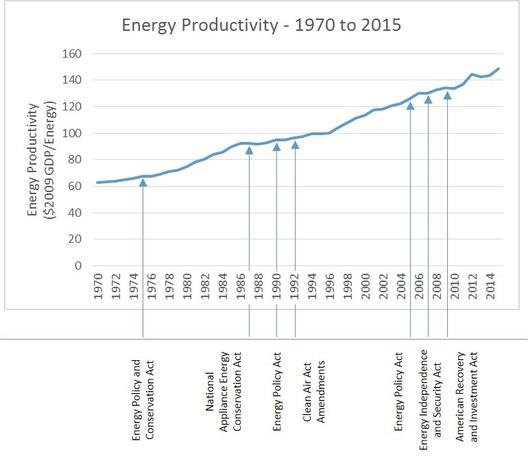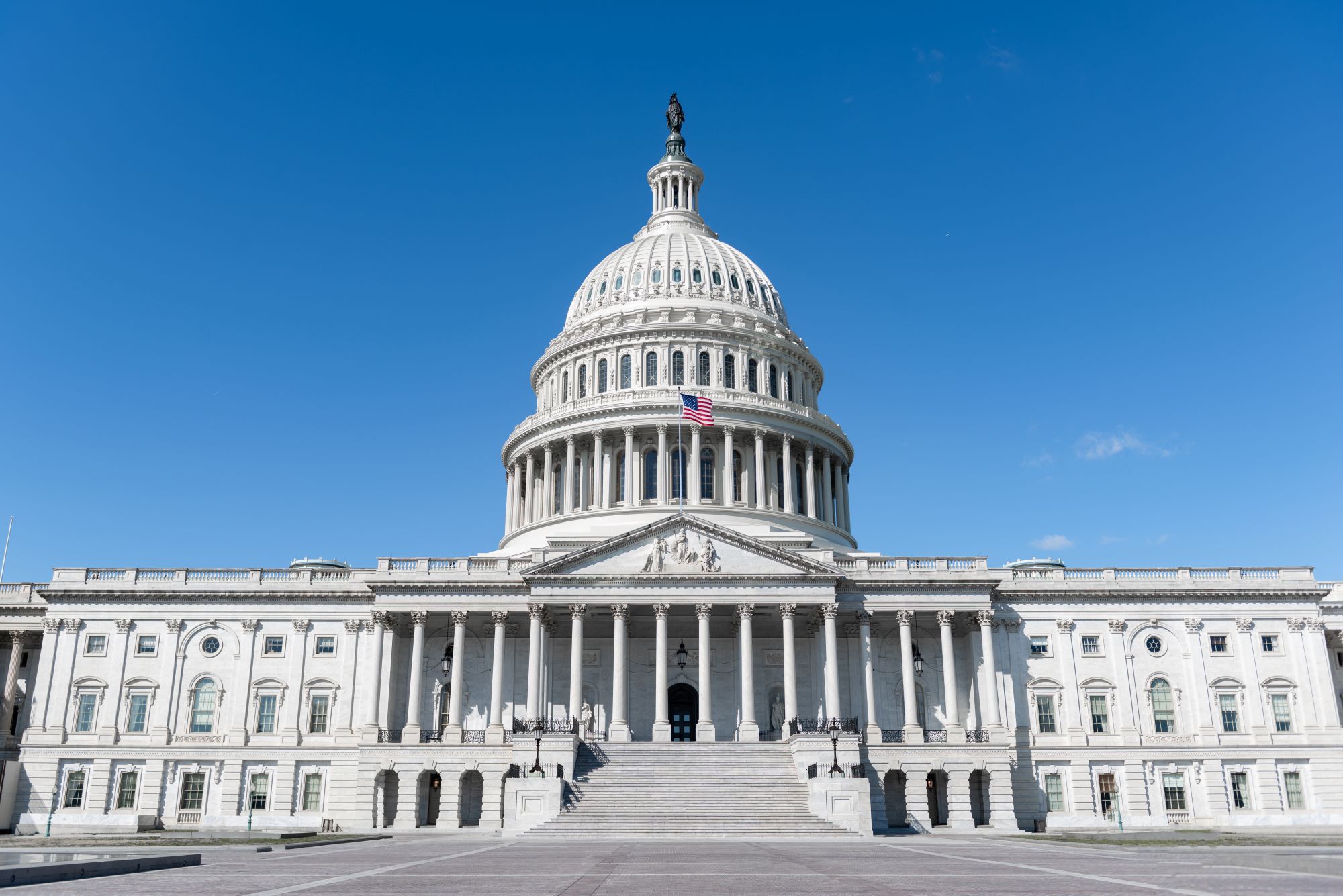Earth Day 1970 to the Present: What a Long, Productive Trip It’s Been!
Let's Save Energy
Alliance to Save Energy's Blog

When millions of people around the world gathered on April 22, 1970 to celebrate the first Earth Day, the future seemed precarious. Some of the bleakest predictions involved extinctions, starvation, pollution and empty oil wells. Well, after 46 Earth Days have come and gone, the worst outcomes have been avoided—but significant opportunities to transform our energy system toward a brighter environmental future remain for us to seize. We are marking this year’s Earth Day celebrations with a look back at the impressive gains in energy productivity and the most impactful U.S. energy efficiency policies since 1970.
Before the 1970s, the U.S. energy policy landscape was a very different place. According to the U.S. Energy Information Administration, fossil fuels supplied 82 percent of U.S. electricity generation in 1970. Petroleum use was on the rise, with coal and natural gas on downward trends. Cars were not yet equipped with catalytic converters, pumps dispensed leaded gasoline, and manufactures were not held to fleet-wide mileage requirements. Consumers shopped for inefficient appliances with little choice and that familiar blue logo that helps inform our purchase decisions was nowhere to be found.
Then things really started to change. A lot of that change was unwelcome and costly and led to advancements and innovation in energy policy. A series of oil shocks started in 1973 and sent prices through the roof, leading to shortages and rationing. In response, California enacted the first efficiency standards in 1974, followed by national legislation in 1975. Also in 1975, Congress created national fuel economy standards. And lest we forget, in 1977, Sens. Charles Percy (R-Ill.) and Hubert Humphrey (D-Minn.) founded something called the Alliance to Save Energy to promote energy efficiency in the U.S. and abroad.
The chart embedded in this blog post tells the story of energy productivity, which has steadily improved since the first Earth Day and the succession of major policies.

Since the first Earth Day, the increase in energy productivity has been dramatic. U.S. gross domestic product is more than 3.5 times more today than in 1970, while energy consumption has gone up just 43 percent. The chart also indicates when major legislation was enacted – clearly showing the effects of sound efficiency policy on increased energy productivity.
A lot can change in 46 years – and a lot more will change in the coming decades. Against this backdrop of change, we should remain steadfast in our commitment to efficiency in order to drive productivity even higher and contribute to a healthier planet. Just as we today enjoy the benefits provided to us by efficiency policies already in place, future generations will benefit from those under development but yet to take effect. Looking ahead another 46 years, Earth Day 2062 will really be something!
STAY EMPOWERED
Help the Alliance advocate for policies to use energy more efficiently – supporting job creation, reduced emissions, and lower costs. Contact your member of Congress.
Energy efficiency is smart, nonpartisan, and practical. So are we. Our strength comes from an unparalleled group of Alliance Associates working collaboratively under the Alliance umbrella to pave the way for energy efficiency gains.
The power of efficiency is in your hands. Supporting the Alliance means supporting a vision for using energy more productively to achieve economic growth, a cleaner environment, and greater energy security, affordability, and reliability.



